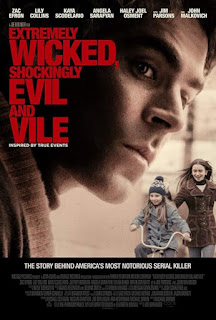The common camera angles in horror films and thrillers are high angles, birds eye view, low angles, and close- ups. High angles, birds eye view, and low angles are used to show the superiority and/ or the inferiority/vulnerability of a character. Close- ups are used to show the reactions of the characters, and the intensity of the scene. The most common camera movements are tilts and pans. Tilts are used to identify a supernatural being or antagonist in general. Pans are used to show the full area of the scene. The most common camera shots are tracking, point of view, and over the shoulder. Tracking shots are used to film someone’s passage while they’re running from the antagonist(s); they are also used to show when someone is being followed. Point of view shots are used to show the traumatic or horrendous thing or person that a character is looking at; they are also used to show that someone is being watched, or trying to find something. Over the shoulder shots are used to show someone or something lurking being someone else.
The common mis en scene aspects in horror and thriller movies are all of them. They include costumes, lighting, actors, makeup, props, and setting. The distinctive, out of the ordinary costumes are typically worn by the antagonist(s); they fit according to their back stories and personalities. The lighting in horror and thriller films is usually eerie or ominous. The actors in these films must have exceptional abilities; they have to be very convincing and switch from various emotions such as sorrow, fear, and shock. The makeup in these films are very detailed and gory at times especially in serial killer movies. The main props in horror films are the weapons that the antagonist(s) use. The setting of a horror and thriller film is usually in a small or made up town.
The common sounds and editing of horror films and thrillers are diegetic and non diegetic, sound motifs, incidental music, dialogue, cutaway, eye-line match, reaction shot, and jump cut, and eyeline match. Diegetic sounds are present when the scene is calm. Non-diegetic sounds are heard when a very climactic scene is occurring like when the antagonist(s) draws their weapon. Sound motifs occur when the antagonist(s) are about to appear. Incidental music is used to build suspense in the scenes. Dialogue in these type of movies are stemmed from fear and shock, and the characters figure out what to do next. Cutaways are used to show the action that was described in the previous scene taking place in the current scene. Eye line matches are usually used when a character discovers something awful; first their reaction is shown, and then the thing that they are reacting to. This is similar reaction shot; the only difference is that the character could be reacting to something they hear as well. A jump cut is used to show the passage of time. For example, at the end of the movie when he antagonist(s) was defeated and the protagonist(s) is at peace, the scene will move from the climax during the night to the falling action the next morning.
Examples of horror films:
It (2017)
The Conjuring (2013)
Ouija (2014)
Scary Stories to Tell in the Dark (2019)
Examples of thrillers:
Us (2019)
Extremely Wicked, Shockingly Evil and Vile (2019)
A Quiet Place (2018)
Split (2016)









No comments:
Post a Comment